In the view of legendary bodybuilder Rich Piana, only 5% of people have the vision, drive, and skill required to reach their personal goals and become the best possible version of themselves.
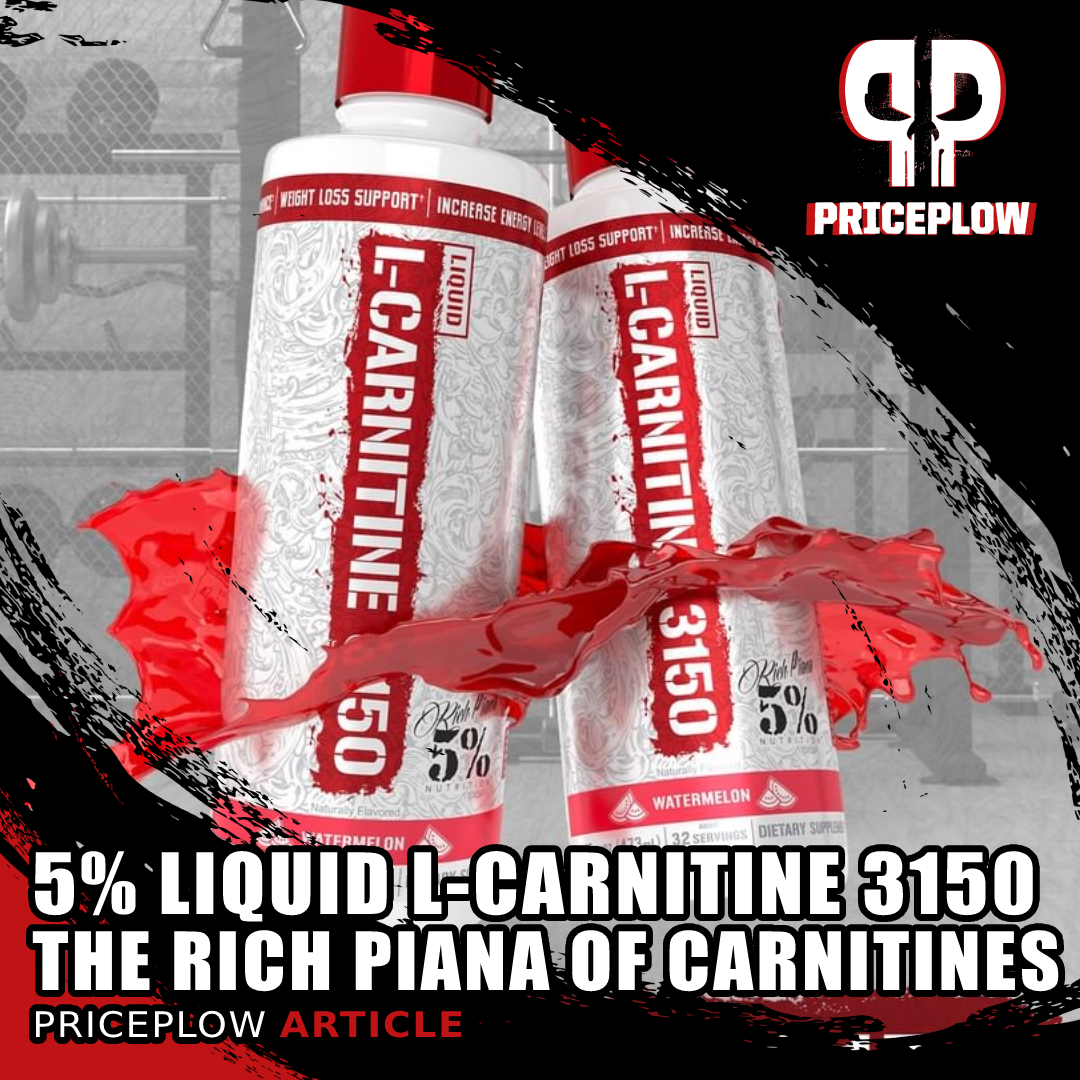
With a quadfecta of L-Carnitine, Acetyl L-Carnitine, LCLT, and GPLC -- alongside GBB and Thiamine -- 5% Nutrition's Liquid L-Carnitine is the "Rich Piana of carnitine supplements"
Piana founded his supplement company, 5% Nutrition, with a laser focus on one goal: to produce supplements of exceptional quality and efficacy, good enough to make a meaningful difference in the lives of this elite 5%. Piana hoped to make a meaningful difference in the world by giving these high achievers the nutritional support they need to feel and function at their best, thus helping them achieve their goals and become the best possible version of themselves.
5% Nutrition Liquid L-Carnitine 3150: The Rich Piana of Carnitines
Today we're going to discuss one compound that is particularly good at helping people perform: carnitine. And a supplement that gives us an incredible 3.15 gram blend of it - 5% Nutrition Liquid L-Carnitine 3150. This is what we consider "the Rich Piana of carnitine supplements".
Below, we dig into this quadfecta blend of L-Carnitine, L-Carnitine Tartrate (LCLT), Acetyl-L-Carnitine (ALCAR), and Glycine Propionyl-L-Carnitine (GPLC) boosted by GBB and thiamin, diving into each carnitine's added benefits -- but first, check out prices, flavors, and availability with PricePlow and sign up for our 5% Nutrition news alerts:
Rich Piana 5% Nutrition Liquid L-Carnitine 3150 – Deals and Price Drop Alerts
Get Price Alerts
No spam, no scams.
Disclosure: PricePlow relies on pricing from stores with which we have a business relationship. We work hard to keep pricing current, but you may find a better offer.
Posts are sponsored in part by the retailers and/or brands listed on this page.
Carnitine is essential for optimal human health, and has been identified by researchers as a "quasi-vitamin" because of its absolute necessity for optimal metabolic function.[1]
It affects your body's production of adenosine triphosphate (ATP) which, as we will see, affects almost every aspect of human health because of how fundamental ATP is for cellular function.
Ingredients
In a single 1 tablespoon (15 mL) serving of Liquid L-Carnitine 3150 from 5% Nutrition, you get the following:
-
L-Carnitine (as L-Carnitine Base, L-Carnitine Tartrate, Acetyl-L-Carnitine and Glycine Propionyl-L-Carnitine HCl) – 3.15 g
Carnitine is a quaternary ammonium compound that helps the body burn fatty acids for energy. It does this by moving those fatty acids into your cells, where the energy-producing organelles, called mitochondria, can use them to produce adenosine triphosphate (ATP).[2]
Note that this is a blend of several different forms of carnitine. Although any form of carnitine will benefit cellular metabolism, each form has its own unique effects on other systems and organs in your body.
Let's start by discussing what carnitine does at the most fundamental level, and then we can get into how each form of carnitine functions differently.
Carnitine's Basic Mechanism of Action
So why care about ATP? Well, ATP is your body's energy currency – it is the chemical unit of energy that your body uses to do useful work. If your body were a car, ATP would be the gasoline.
"Useful work" here means literally anything you ask your body to do – including muscle protein synthesis, neuromuscular adaptations that increase strength, and general recovery from exercise. If you want a great physique and high athletic performance, you have to have lots of ATP.
"L-carnitine function. l-carnitine shuttles long-chain fatty acids inside the mitochondria by forming a long chain acetylcarnitine ester. The complex is then transported into the mitochondrial matrix by carnitine palmitoyltransferase I (CPT I) and carnitine palmitoyltransferase II (CPT II). The fatty acids are then broken down through the process of β-oxidation to deliver the 2-carbon molecules to the Krebs cycle, leading to the generation of energy under the form of adenosine triphosphate (ATP). In addition, by binding an acetyl group, l-carnitine can maintain the levels of Acetyl-CoA and coenzyme A, playing its buffering role."[3]
Production of ATP is controlled by a group of intracellular proteins called the "mitochondrial respiratory chain complex." These proteins (referred to as complexes I-IV) control enzymatic reactions that convert energy substrates like oxygen, carbohydrates, and fatty acids into ATP by way of a metabolic pathway called oxidative phosphorylation.[4]
Because of carnitine's general effect on cellular metabolism, getting enough in through diet (mainly red meat) or supplementing it is critically important to human health.
A great deal of research has shown that carnitine supplementation is associated with healthy weight loss[5,6] and decreases insulin resistance while improving glucose metabolism.[7]
Carnitine also increases your body's ratio of brown adipose tissue (BAT) to white adipose tissue (WAT). This is a good thing because BAT is more metabolically active than WAT, so the more BAT you have, the more calories you'll burn – specifically, as heat – in a process called non-shivering thermogenesis.[8]
-
L-Carnitine L-Tartrate's specific effects
L-carnitine L-tartrate is a form of carnitine often used by supplement manufacturers because it is highly bioavailable and fast-acting.[9]
A study conducted on long-distance runners showed that a 2 gram daily dose of L-carnitine can increase the cellular concentration of these enzymes,[10] which in theory should increase the efficiency of cellular function and support athletic adaptation to exercise.
Another study, this one conducted in weight lifters, has shown that 2 grams of L-carnitine L-tartrate (LCLT), taken once daily, can increase oxygen delivery to cells, shedding light on yet another mechanism by which carnitine may improve cellular metabolism.[11]
Supplementation with carnitine can also improve endocrine system functioning, specifically the action of the world-famous anabolic hormone testosterone. That same study in resistance-trained athletes found that LCLT supplementation can increase androgen receptor (AR) density, meaning the number of androgen receptors present in your muscle tissue can actually grow by supporting mitochondrial health.
Since the binding of testosterone to the AR is what actually causes the effects typically associated with testosterone (i.e. masculinizing, anabolic effects), having an increased AR density is going to amplify those effects, encouraging muscle growth and recovery from exercise, among other things.[11]
One fascinating thing to note about this study is that because of higher AR density and increased muscle protein synthesis, testosterone uptake was improved, causing testosterone levels in the blood to actually decrease. Put simply, the testosterone was inside the study participants' cells, rather than sitting uselessly in their bloodstream.[11]
That's the big takeaway from the research literature on LCLT: it optimizes androgen function.
-
Acetyl-L-Carnitine (ALCAR)
Next up in our carnitine blend is acetyl L-carnitine (ALCAR). ALCAR has a long history in the supplement industry as a nootropic compound, because of the neuroprotective, neurotrophic (meaning neural growth) and even anti-depressive effects.[12] L-carnitine L-tartrate (LCLT), ALCAR helps shuttle energy substrates into your mitochondria, thus facilitating ATP production,[9] a process that benefits not just muscle cells, but pretty much any type of cell in your body, including neurons.
ACLAR's unique effects on the central nervous system, compared to other chemical forms of carnitine, can be explained by its ability to cross the brain blood barrier (BBB),[13] which is something that most nutritional supplements are unable to do. Generally, for any given supplement ingredient, there will be (if you're lucky) just one or two forms of that ingredient capable of crossing the BBB – and for carnitine, that form is ALCAR.
Animal studies have shown that ALCAR supplementation can improve the synaptic plasticity of mammalian neural tissue and improve learning.[14]
An important human study, conducted in men and women over the age of 65 suffering from mild cognitive impairment, showed that the group taking ALCAR had significantly better scores on a battery of cognitive tests than those who got a placebo.[15]
-
Glycine Propionyl-L-Carnitine HCl
Next up is glycine propionyl L-carnitine, the form of carnitine that's especially good for boosting athletic performance. Studies on GPLC have shown that this carnitine can increase vasodilation, a mechanism that causes blood vessels to expand in diameter, thus improving circulation. With better circulation comes a whole host of benefits including better oxygen uptake, nutrient delivery, and waste removal, which can both increase athletic endurance and speed up recovery following exercise.
Perfect to synergize with L-Carnitine: After nearly a decade of bulking, it's finally time for 5% Nutrition to release a fat burner: It's Shred Time!
One study on GPLC supplementation found that it can dose-dependently increase the anaerobic work capacity of those who take it.[16]
In fact, propionyl carnitine is so good for arterial function that in patients with arterial disease, propionyl carnitine supplementation significantly increased their ability to walk without assistance.[17]
GPLC, and other propionyl L-carnitine molecules, seem to do this by increasing blood levels of nitric oxide (NO),[18] which is always welcome for anyone who's trying to improve performance and recovery.
The health benefits of glycine
The fact that our propionyl L-carnitine is bound to glycine means that when GPLC is metabolized, free glycine will be released and available for use by your cells.
We don't know exactly how much glycine is present here, but the research literature generally attests to the efficacy of relatively small doses – i.e. less than 1 gram – so it's worth going over why glycine is one of the better choices for a propionyl L-carnitine delivery system.
There's a ton to say about glycine. First and foremost, it's used by your body for collagen synthesis,[19] which is an incredibly important function considering that collagen is the basis of your body's connective tissue, the stuff that holds together the different parts of your body. Specifically, tendons are highly collagenous, so anyone who's straining their tendons on a regular basis (with intense exercise or heavy lifting) should make collagen-synthesis support a priority.
How much creatine and carnitine you need to get depends on a few factors, including how much meat you eat
There's also a massive— and we mean massive — body of research showing that glycine supplementation can significantly increase sleep quality,[20-30] which, as we all know, is the foundation of performance and recovery. Note that the studies we've cited on glycine and sleep are just a small fraction of the data that's out there!
Glycine can also improve cognition through anti-excitatory effects,[31-33] and stimulation of the N-methyl-D-aspartate (NMDA) receptors,[34,35] which supports a process called long-term potentiation (LTP). LTP is basically responsible for memory consolidation. So, in a nutshell, better LTP means better learning.
It can also increase your cells' all-important sensitivity to insulin[36] and has anti-catabolic[37,38] and cardioprotective[39] effects.
As you can see, glycine is an awesome amino acid to take supplementally, which is why we're glad to see 5% Nutrition using glycine propionyl L-carnitine, specifically.
-
-
Gamma-butyrobetaine hydrochloride (GBB) – 25 mg
Gamma-butyrobetaine hydrochloride (GBB) is a carnitine precursor that gets turned into L-carnitine by a naturally-occurring enzyme called gamma-butyrobetaine dioxygenase (BBD).[40]
So why take a carnitine precursor instead of carnitine itself?
GBB modifies your body's carnitine equilibrium
To answer that question we have to discuss a concept from chemistry called Le Chatelier's principle – otherwise known as the law of chemical equilibrium.[41]
The reaction that turns GBB into L-carnitine goes both ways: your body will convert GBB into carnitine, but it will also convert excess carnitine back into GBB. The pathway image above is more detailed, but the point is that your body will do its best to maintain hemeostasis and can go in both directions
Although BDD turns GBB into carnitine, there is also a mechanism whereby your body turns carnitine back into GBB: namely, by the symbiotic microorganisms of your gut flora.[42]
If your carnitine levels are high, your body will attempt to maintain equilibrium between the reagent (GBB) and the product (carnitine) by turning some of the carnitine you consume back into GBB, and leaving that GBB unconverted by BDD.
In order to maintain high carnitine levels, you also need to give your body enough GBB so that it maintains this simple equilibrium in favor of higher carnitine.
Of course, when you drill down to the details you'll find that the process of maintaining this equilibrium is a little more complicated than just a two-way arrow, but that's the gist of it.
GBB's other effects
GBB Supplements add to the "carnitine pool" by increasing the reagent -- GBB -- which goes on to make more carnitine if your body needs it!
The other problem with supplementing straight carnitine is that high doses of carnitine reliably produce gastrointestinal distress,[43,44] so there's a kind of upper limit on the amount of carnitine that you can actually supplement with.
GBB steps in to increase your overall carnitine potential, allowing you to boost your levels beyond that upper limit without causing the unwanted GI symptoms.
Also, much like GPLC, which we discussed above, GBB seems to be a potent nitric oxide (NO) booster.[45] In fact, GBB may be the best carnitine-boosting compound for increasing NO production.[45]
If you need a refresher on why we want to boost NO levels, scroll back up to the GPLC section.
GBB's special claim to fame: the sweat factor
The big selling point for GBB supplements is usually the fact that it can make you sweat like crazy. This leads many users to feel like the supplement is enabling them to get a better workout. And while it's true that increased NO production and higher carnitine levels can definitely increase your athletic performance, higher exercise intensity is probably not the main reason that GBB causes increased sweating.
Are you Stage Ready? Get there with a diuretic that actually replaces lost electrolytes!
As far as we know, the mechanism of action behind GBB's effect on sweating hasn't been discovered yet, but regardless, increased sweating is associated with a number of health benefits.
Sweating can eliminate toxic chemicals from your body – specifically, bisphenol A (commonly referred to as BPA),[46] a xenoestrogenic endocrine disruptor; and the polychlorinated biphenyls (PCBs),[47] which have been linked to a number of adverse health outcomes, including cancer.
In fact, there's some evidence to suggest that sweating might,overall, be the most effective mechanism for eliminating a wide range of toxic substances from the body, including not only BPA and PCBs but also urea (a waste product of protein metabolism), persistent organic pollutants, and heavy metals.[48]
So although increased exercise performance might not be behind GBB's ability to increase sweat, increased sweating is itself potentially beneficial for your health.
-
Thiamin (as Thiamin Mononitrate) – 25 mg (2,083% DV)
The "big picture" of carnitine supplementation is that it works by increasing ATP production – and thiamin (also spelled thiamine or referred to as vitamin B1) is one of the body's most important essential cofactors for ATP production.[49] That is, without thiamine, your body cannot make carnitine.
In extreme cases, thiamine deficiency can cause neuronal death due to lack of cellular energy from impaired ATP production.[50] This syndrome, called Wernicke-Korsakoff encephalopathy, is most commonly associated with alcoholism because of alcohol's tendency to deplete your body of thiamine.
The main reason why 5% Nutrition put thiamine in the 3150 Liquid Carnitine formula is that increased carnitine synthesis, specifically from the GBB portion of the carnitine blend, is likely to increase your body's consumption of thiamine as well. Taking some supplemental thiamine along with GBB will help prevent any potential thiamine deficiency.
Specifically, thiamine is important for glucose metabolism[51] and type 2 diabetics have been observed to have lower-than-average thiamine levels, suggesting that some degree of thiamine deficiency may play a role in the onset of diabetes. High dose thiamine supplementation has been shown to improve hyperglycemia symptoms in pre-diabetic individuals.[52]
A 2013 meta-analysis of 20 different studies concluded that thiamine supplementation can also improve cardiac function in patients with heart failure,[53] which is a great illustration of how energy insufficiency at the cellular level (in the form of ATP deficiency) produces disease in myriad forms.
Groups that need carnitine supplements
Because carnitine is consumed in the metabolic adaptations to exercise, athletes generally stand to benefit more from carnitine supplementation than non-athletes. Research shows that athletes who supplement with carnitine can enjoy better oxygen uptake and power output during exercise, and reduced soreness and faster recovery following exercise.[3]
Because the primary source of carnitine is red meat (hence the name), vegans and vegetarians also may have a special interest in carnitine supplementation, as do the elderly (because of age-related metabolic decline).[3,54-59]
Flavors available
This is a liquid supplement - so it has to be flavored, of course:
Conclusion
5% Nutrition really pulled out the stops with this one – the formula design of their 3150 Liquid L-Carnitine shows a deep understanding of carnitine production. We love seeing the combination of supplemental carnitine with GBB to help push the regent-product equilibrium in the right direction, plus all the different forms of carnitine that all have a unique benefit.
In terms of stacking, dieters will appreciate the Shred Time and Stage Ready images shown on this page, while bulkers (and nearly everyone else) should consider a creatine supplement like 5% Nutrition's Core Creatine or the fabulous Crea-TEN supplement. Plenty of other great supplements can be stacked in depending on your goals - read about them all on our 5% Nutrition News & Articles page!
Rich Piana 5% Nutrition Liquid L-Carnitine 3150 – Deals and Price Drop Alerts
Get Price Alerts
No spam, no scams.
Disclosure: PricePlow relies on pricing from stores with which we have a business relationship. We work hard to keep pricing current, but you may find a better offer.
Posts are sponsored in part by the retailers and/or brands listed on this page.
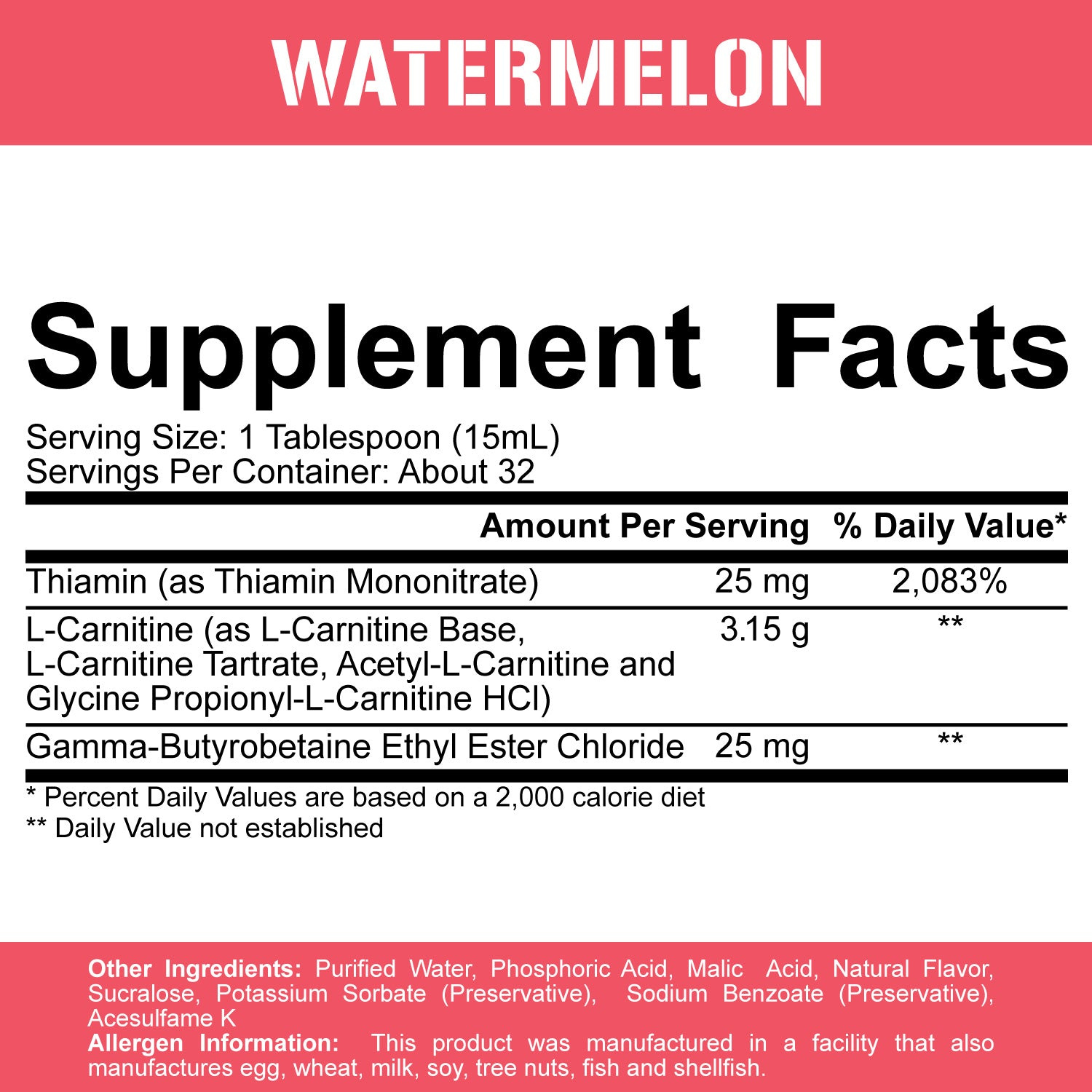
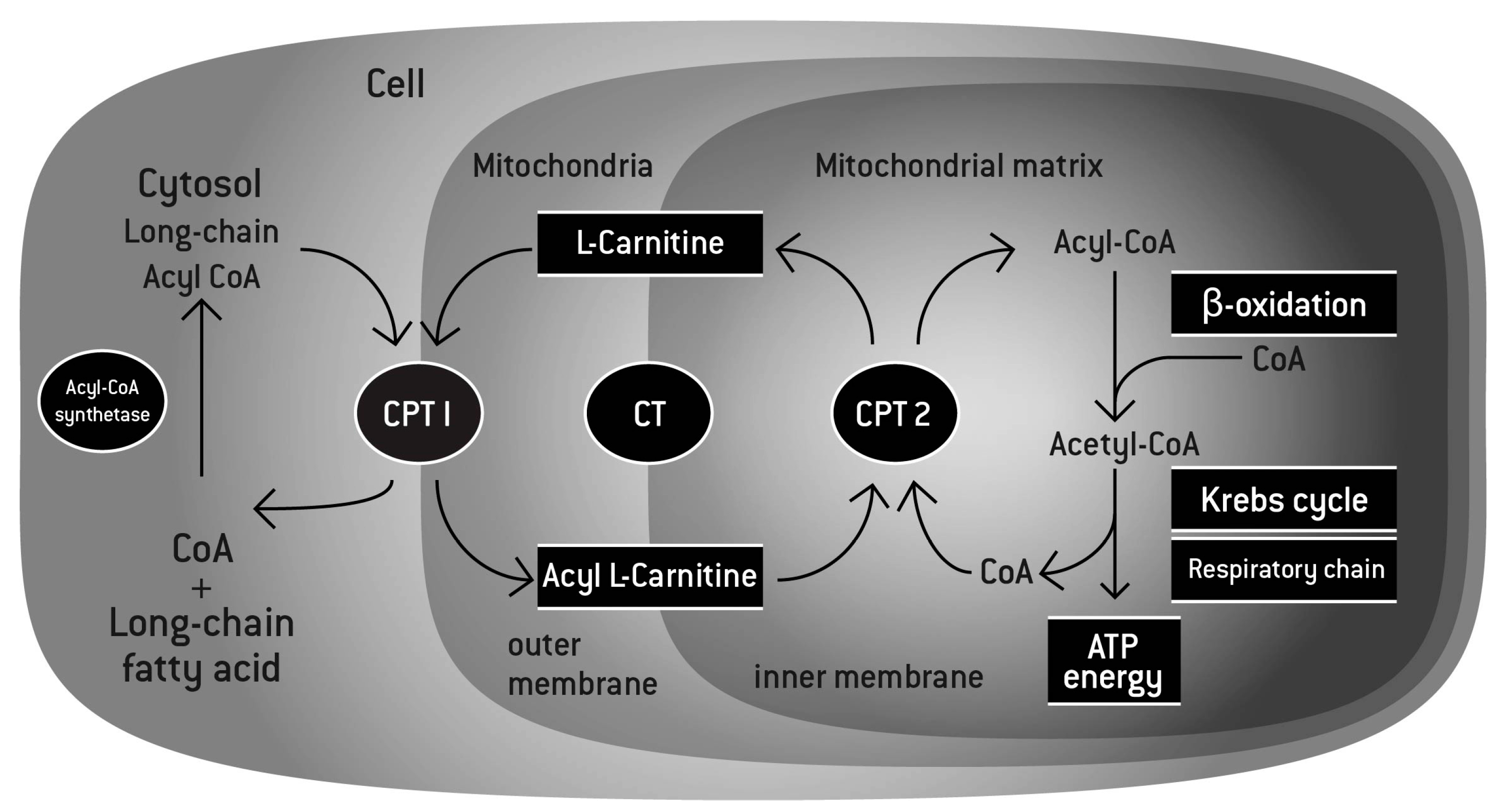
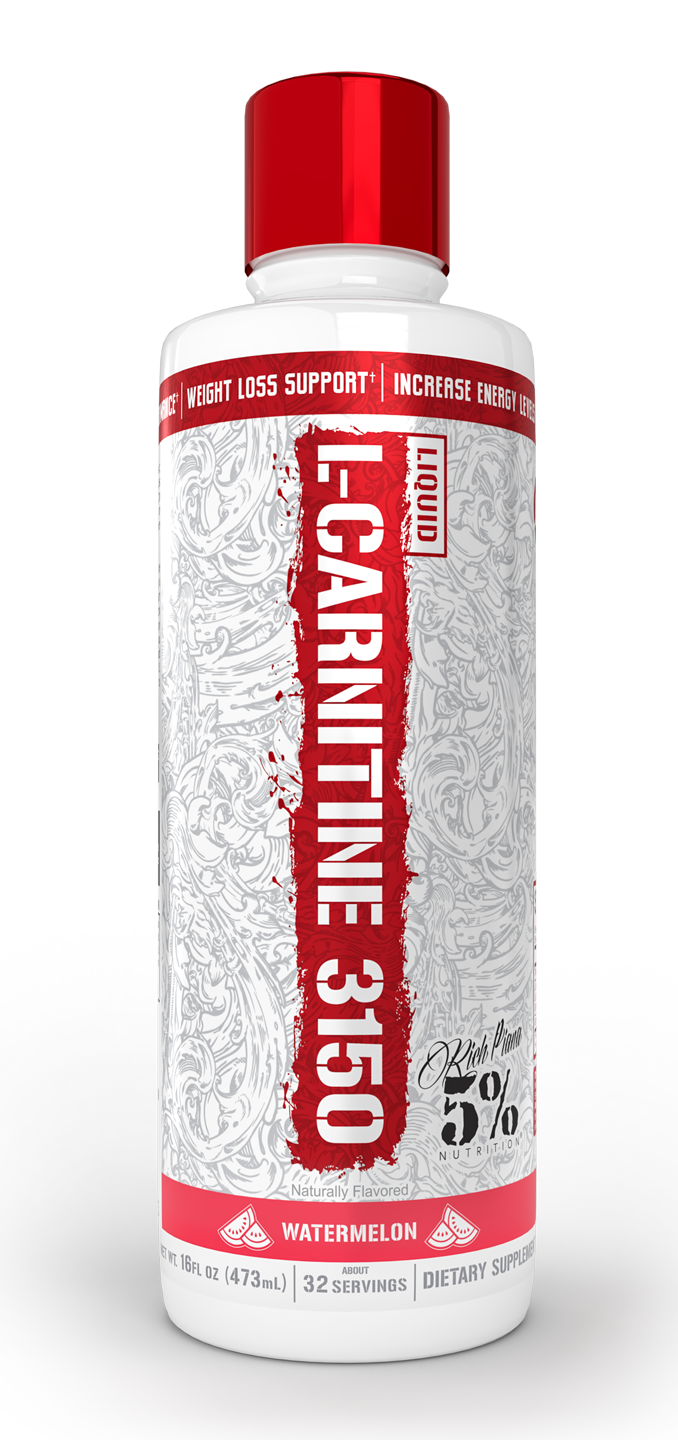
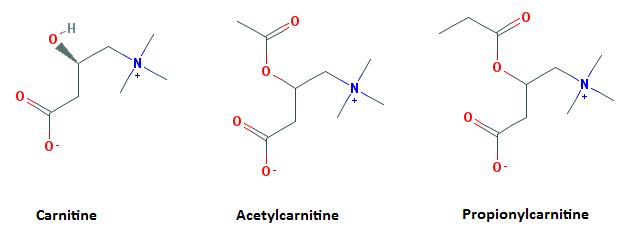
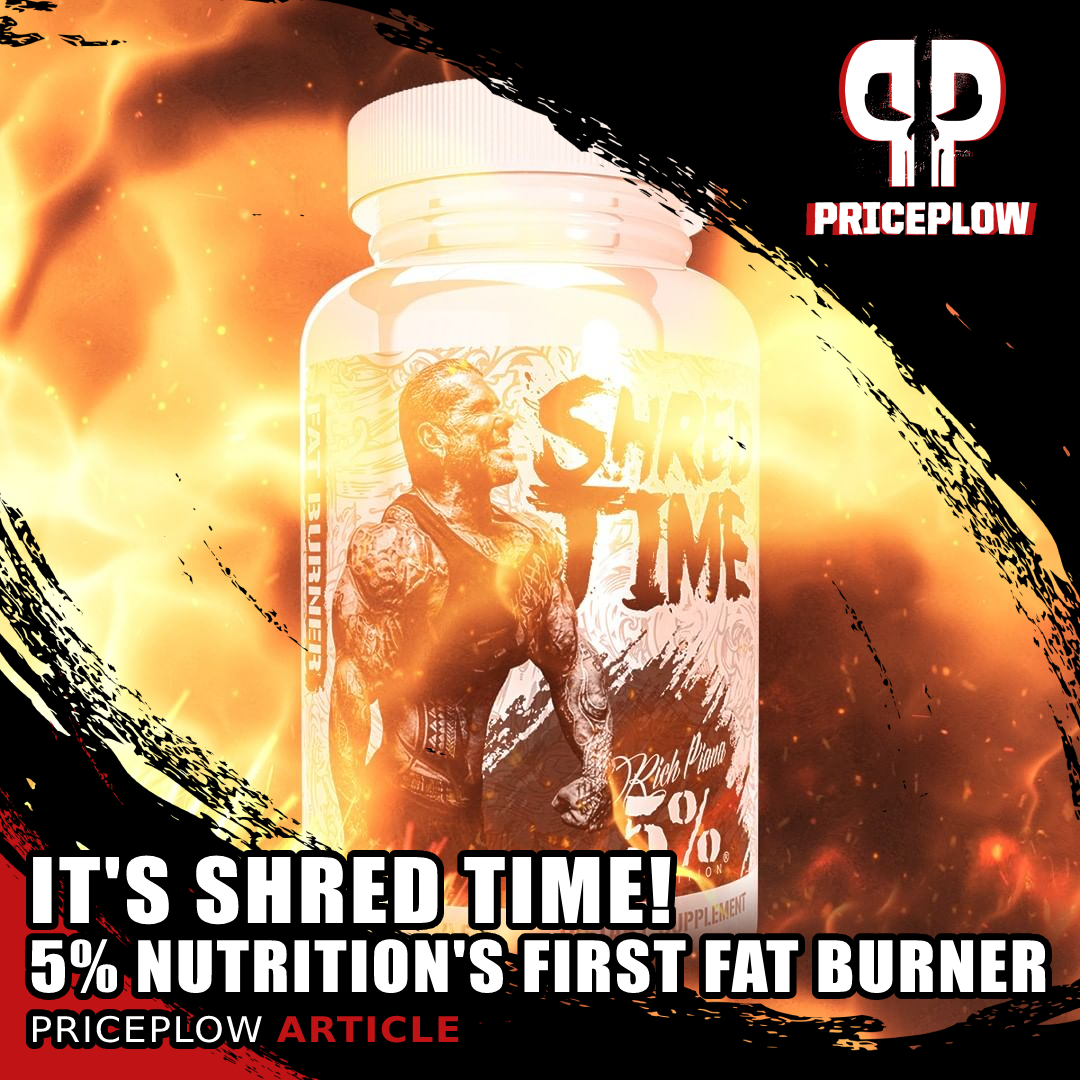


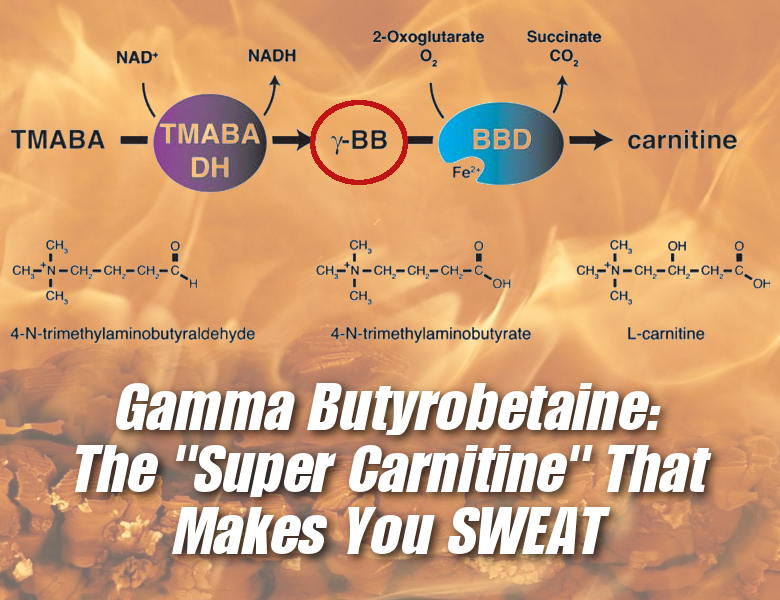
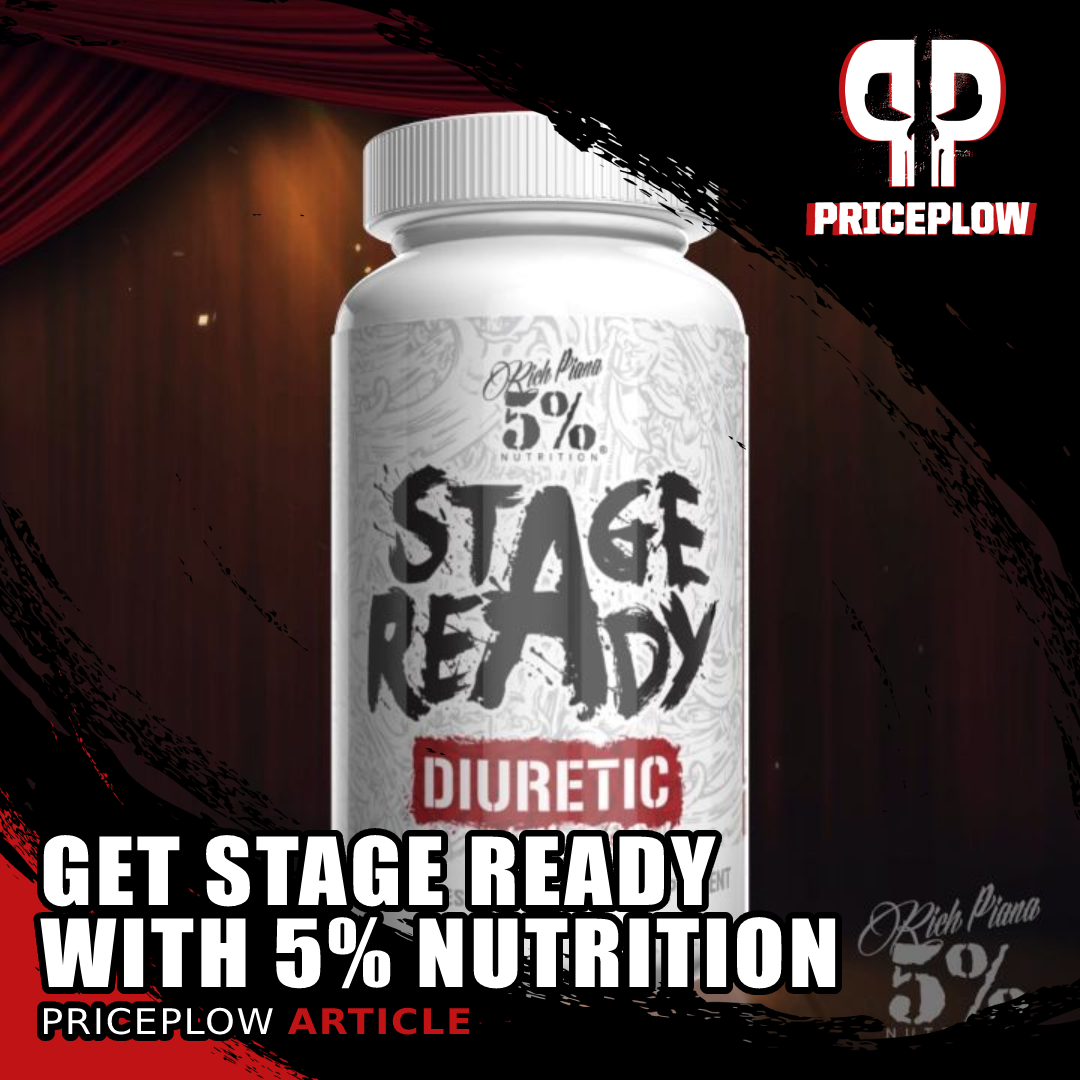

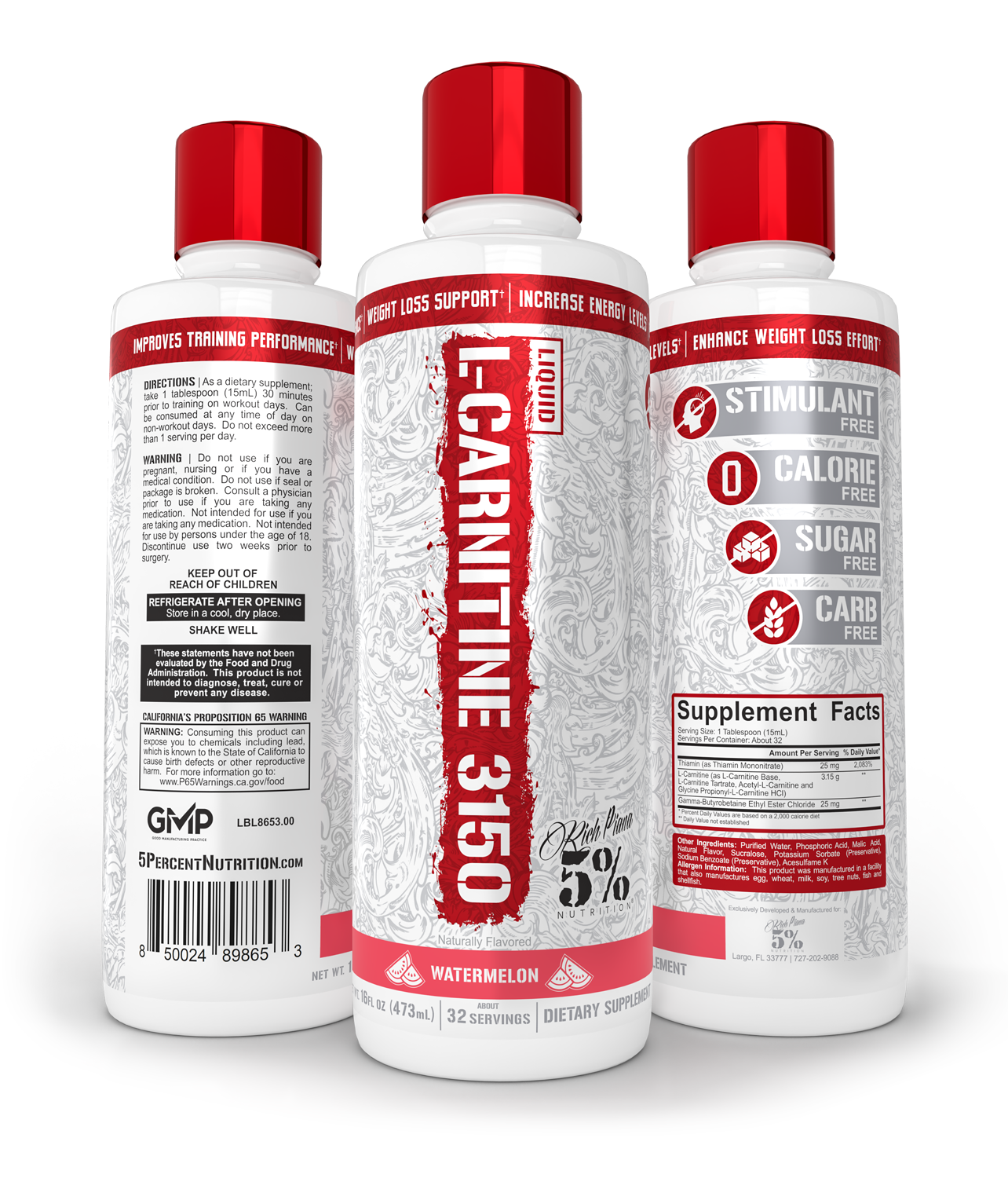


Comments and Discussion (Powered by the PricePlow Forum)